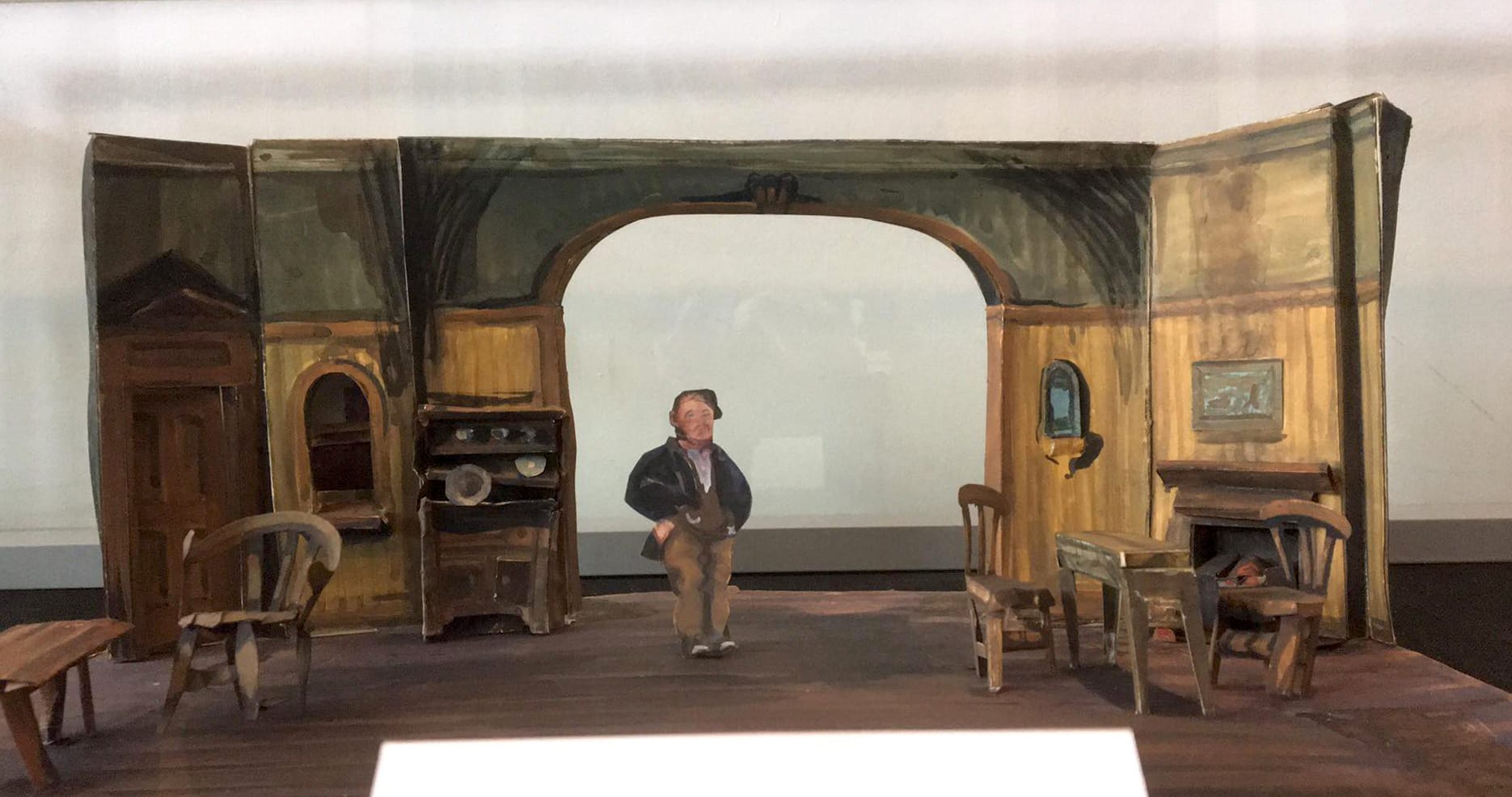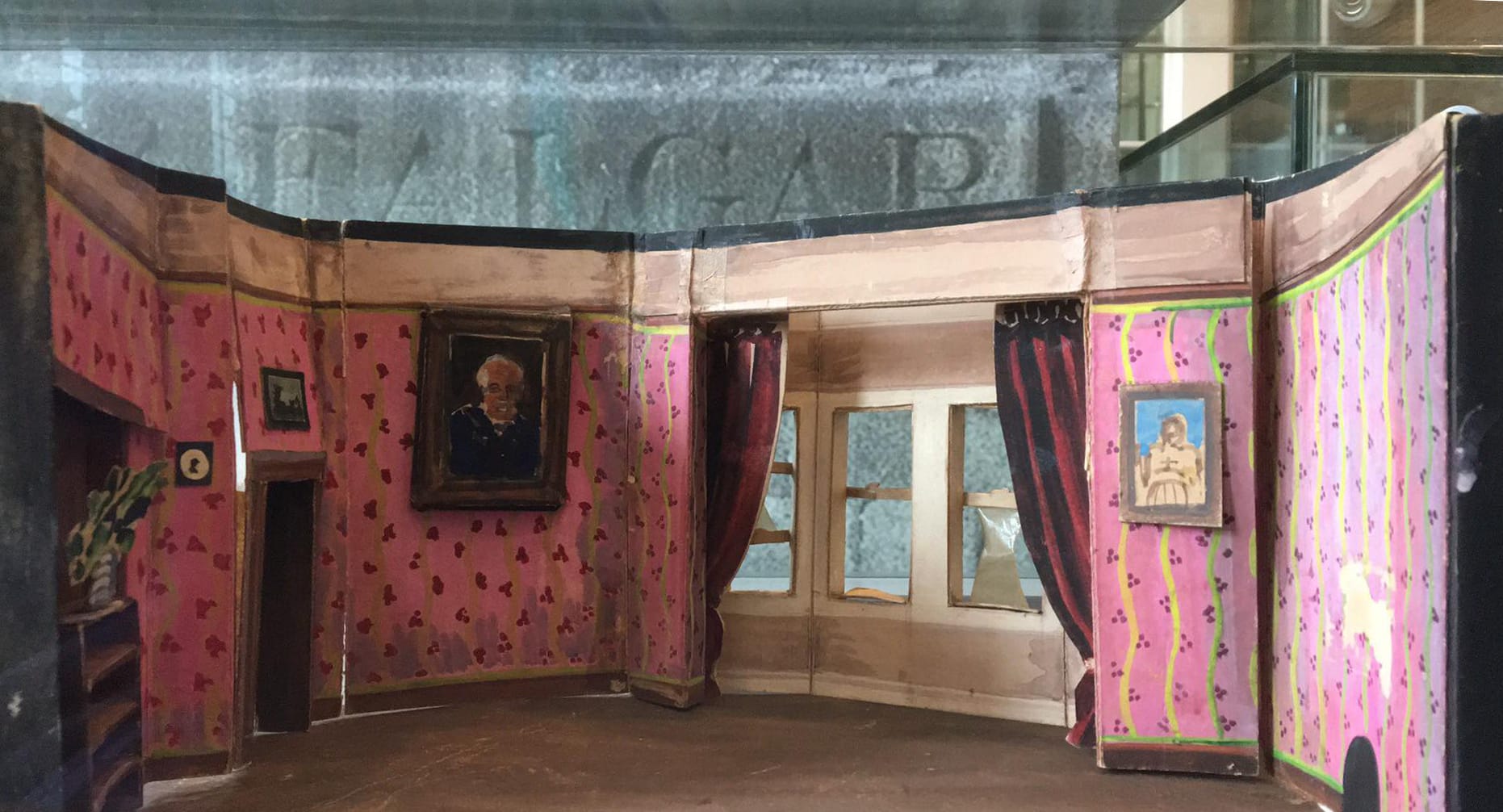Nobody caught illegally dumping yet by new north inner-city CCTV
But the scheme is a success, said a council official's report, as that shows the cameras are a deterrent.
Helen Hooker O’Malley mocked up mini set designs called “maquettes” for the Players Theatre. Some have found their way back to the city.

Irish theatre wasn’t that inclusive in the 1940s, says Barry Houlihan, an archivist and lecturer in theatre at NUI Galway.
The Abbey Theatre in Dublin had unsuccessfully tried to set different wages for female and male actors, he says.
Employment was precarious, and despite its rare distinction of being funded by the state, the Abbey Theatre kept actors’ wages low, Houlihan says.
There were also the plays themselves: based on an “idealistic” sense of nationalism and Gaelic culture, with the same stock characters popping up time and time again, says Houlihan.
A prolific female dramatist was unceremoniously dropped at the height of her career, he says – apparently because what she wrote didn’t chime with the country’s increasingly conservative direction under Éamon de Valera.
It was out of discontent with the establishment that the Dublin Players Theatre was born in 1944.
Helen Hooker O’Malley, a founding member and renowned sculptor, began to design sets for her friends, including the actors Liam Redmond and Barry Cassin.
“People like Helen Hooker O’Malley were central to bringing an artist’s eye in terms of design, that it wasn’t just about the text,” says Houlihan.
On show at the Pearse Street Library until the end of July, they’ve the 70-year-old evidence of Hooker O’Malley’s delicate and detailed work in 10 of her small-scale stage designs, also known as “maquettes”.
Tiny pieces of paper measuring mere centimetres come together, depicting stage scenes from the Players Theatre’s productions.
There are tiny tenement and pub scenes, chairs and tables, figurines of characters and painted fireplaces and doors. There are also some sketches for sets.
Artefacts like maquettes from this period are incredibly rare, says Houlihan. Designers would often discard or recycle and reuse the materials.
Model boxes he’s seen are from much later than the 1940s, he says. “For a theatre-goer it’s priceless. You don’t get those opportunities too often.”
The maquettes had been in Cormac O’Malley’s attic for years, flattened and cut up. Sometimes, they were taped back together.
O’Malley wanted to honour his mother’s work in Ireland. Living in the United States made this tricky.
It was through a chance conversation with his grandchildren’s childminder at his home in Connecticut that the maquettes found their way to Ireland.
She said she was flying over that afternoon, O’Malley says. “So I ran up to the attic, put them in a bag and sent them to Ireland.”
She delivered them to the Dublin City Archives. Archivist Mary Clark says it was a “match made in heaven”. The archives had a theatre history collection already, she says. Dublin City Council funded the conservation of the maquettes.
“I love maquettes myself. They’re very frail, very fragile and very few of them survive from that era,” she says.
There is little written about the Players Theatre either. That made O’Malley’s proposal all the more intriguing, says Clark.
“It’s actually one of the lost theatres of Dublin in the sense that nobody knows about it,” Clark says.
The maquettes had been packed away and moved several times throughout the years.
The first arrived at conservationist Liz D’Arcy’s Paperworks Studio in Wicklow in December 2018 and the remaining nine arrived in February. They were dirty and some had mould.
First, D’Arcy delicately cleaned the paper, she says. Using a smoke sponge, she wiped away smoke damage. She gently cleaned the surface with moist cotton swabs. The paint and the pigment aren’t damaged in this process, she says.
Bits and pieces of paper were mixed up so it wasn’t clear which chair or character belonged to each set.
“It wasn’t straight-forward at all, the work,” D’Arcy says, and she laughs. “I have compared it to an archaeological excavation on a very tiny scale.”
With so many pieces, D’Arcy “panicked”, she says. She asked O’Malley for help.
She laid them flat, and photographed them, and emailed the images to O’Malley in Connecticut.
Roughly 5,000km away, O’Malley printed them, and cut them out, then taped them together, rebuilding the theatre sets from memory. He would take photographs and email them back.
“We worked like that with every one of them,” she says.“He was very quick to get back to me.”
It took from December to the end of May. D’Arcy worked late evenings and weekends to restore the maquettes in time for the current exhibition.

From his mother’s archives and her correspondence with friends, O’Malley has pieced together the history of the Players Theatre.
It was formed in 1944 by Gerard Healy, Liam Redmond, Helen Hooker O’Malley and others. “They sort of walked out of the Abbey. That made the news in 1944,” he says.
It was to be an actors’ theatre, says O’Malley. “The basic premise [was] that actors should have a very significant role in running it.”
Houlihan, the theatre archivist at NUI Galway, says that “the Dublin Players Theatre and other fringe groups in the 1940s set in motion what would be a major explosion of experimental Irish theatre groups within a decade”.
These groups performed in the basement theatres with 50 seats, in different spaces across the city. Their drama was non-realistic and not obviously Irish, Houlihan says.
Helen Hooker O’Malley designed sets, financed the group, helped with management, arranged rehearsals and designed costumes.
“She was a bit of the glue that held it [together],” says O’Malley.
The troupe’s first play was The Black Stranger by Gerard Healy, performed first in the Cork Opera House in 1945 and later in the Gate Theatre in Dublin.
Against the backdrop of the Irish Famine, and performed on its centenary, the Black Stranger tackled a subject rarely depicted in theatre at the time.
No one was mentioning the Famine, says Houlihan. “There was no major way of redressing what the Famine did to Irish culture, language and emigration. That was a big move for the Players Theatre, a new company.”
They performed other works, too. Seán O’Casey’s plays Juno and the Paycock, The Plough and the Stars, and _ Shadow of a Gunman.
They took to the boards for John M. Synge’s Well of the Saints, Donagh MacDonagh’s Happy as Larry, and Michael Joseph Molloy’s The King of Friday’s Men.
Among the troupe’s members were actors with distinguished careers such as Barry Cassin, Eithne Dunne, Siobhán McKenna and Shelah Richards and writers such as Mervyn Wall.
Some, like Redmond, moved to London and chased careers in film. But for a few years, from time to time, the Players Theatre would unofficially regroup.
If Redmond was cast in plays in London, he would suggest members of the troupe like Hooker O’Malley for stage design or actress Siobhán McKenna for a part, O’Malley says.
Sometimes, if they got financial backing, they’d rent out a space to put on plays for two weeks or longer. “The group remained amorphous but sort of moved together,” says O’Malley
They performed in London for theatre seasons in 1947–48 and then 1953–54. But from the early 1950s, as the actors moved about and advanced in their careers, the Players Theatre naturally dissipated, says O’Malley.
O’Malley’s parents’ marriage ended. His mother moved back to the United States with two of his siblings.
“As often was the case, a lot of these young theatre companies had a short lifespan,” says Houlihan. “It was so hard to sustain them. The Abbey had funding, although they had their own financial problems.”
Cinema was also stealing larger and larger crowds by the mid-1950s. The Players Theatre probably struggled to keep audiences, says Houlihan.
Actors at the Players Theatre went on to become members of other, later troupes. Barry Cassin was a member of the 37 Theatre Club and enjoyed a long career. Siobhán McKenna found fame on Broadway.
“It was a real network. They supported each other,” says Houlihan. “It developed a really important theatre movement.”
Cormac O’Malley has written extensively about his father Ernie, a writer and commander of the IRA for the anti-Treaty side during the Civil War. This summer, it was time to tell Helen’s story.
June marked the beginning of a series of exhibitions that O’Malley has organised to honour his mother, who died in 1993.
The Gallery of Photography Ireland in Meeting House Square has an exhibition on until 1 September featuring Hooker O’Malley’s earlier photographs.
Until 2 November, the National Photographic Archive is showing her work from the 1970s onwards.
Dublin City Archives plans to digitise more archives from the O’Malley family to reconstruct the theatre group’s history.
Women set designers were rare but important in bringing modernism to Irish theatre, Houlihan says.
“Helen’s work was really important from an artistic point of view,” he says. “I’m really glad to see her work getting its fair recognition.”
